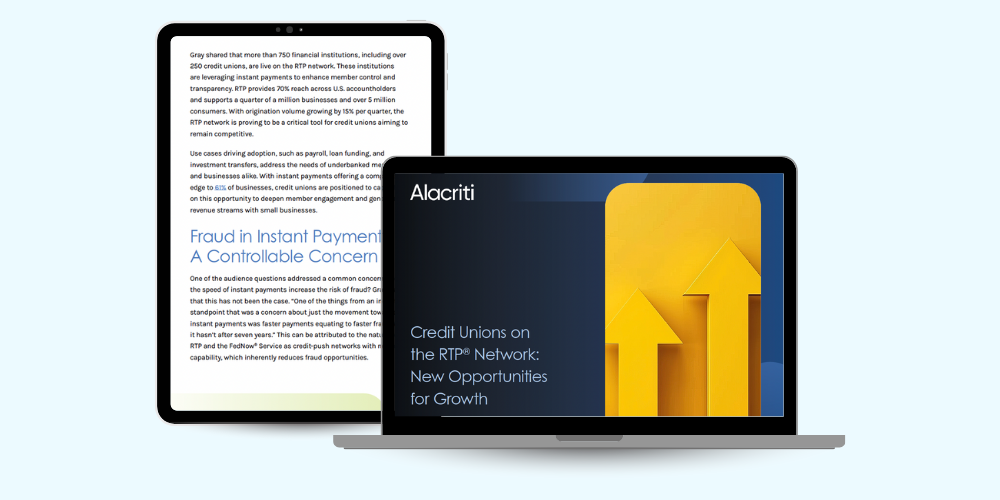The open finance movement has redefined the global financial services landscape. Interconnected ecosystems involving banks, credit unions, FinTechs, payment providers, and other third-party providers are now the norm. Powered by APIs and fueled by account holder demand for seamless, personalized financial experiences and the increasing adoption of AI use cases, these ecosystems continue to grow.
But with this innovation comes a stark reality: as financial systems grow more connected, security risks expand exponentially. The very features that make open finance ecosystems appealing—shared data, third-party collaborations, and enhanced accessibility—are the same features that make them vulnerable.
To thrive in 2025, financial institutions must adopt proactive and airtight security strategies that address the unique challenges of open finance. Let’s explore the key risks and actionable steps needed to fortify the future of open financial ecosystems.
Key open finance security risks in 2025
As open finance ecosystems mature, certain security challenges are poised to grow more critical. Here are three of the most pressing risks that financial institutions must address in 2025:
1. API vulnerabilities
APIs (application programming interfaces) sit at the heart of open finance. They facilitate the sharing of financial data between banks, credit unions, FinTechs, and other third-party apps, enabling consumers to access innovative services with ease. However, because they serve as the "front door" to sensitive systems, APIs are also prime targets for attackers—and API sprawl continues to grow, especially in the AI era.
2. Third-party risks
Open finance depends on partnerships between financial institutions and third-party providers. While these collaborations drive innovation, they also create additional entry points for attackers. A security vulnerability in a single partner’s system—no matter how small—could compromise the entire ecosystem. In fact, the 2024 Data Breach Investigation Report (DBIR) found that 15% of breaches involved third-party infrastructures.
Consider this: many financial services institutions have buyer beware warnings on their websites pertaining to these third-party provider risks. They state phrases like, be aware that the sharing of your credentials is contrary to the terms of our agreements, and we will not be responsible for any harm that results from the sharing of your credentials.
3. Data privacy concerns
Open finance requires the sharing of sensitive consumer data across multiple systems—from account balances to financial transaction histories. While this data sharing underpins new services, it also increases exposure to threats like breaches and misuse. Additionally, consumers expect greater data privacy and compliance with regulations like GDPR, PSD2, and strong Open Finance standards, like FDX (94 million consumer accounts are now actively using the FDX API).
Best practices for securing open finance ecosystems in 2025
To address these risks and build a resilient foundation for open finance, financial services organizations must prioritize security. Here are two critical best practices:
1. Strengthen API security
Because APIs are central to open finance, protecting them should be a top priority. Securing APIs ensures the integrity of connections between financial services institutions, third parties, and end users.
Actionable steps to strengthen API security:
- Strict authentication policies: Use OAuth2, mutual TLS, or other strong protocols to authenticate API users and prevent unauthorized access.
- Real-time monitoring: Use solutions to identify irregular API activity or potential abuse before they escalate. Consider solutions with code-based discovery, traffic-based discovery and inspection and external attack surface assessment (domain scanning).
- Streamline governance: Have solutions that can help with inventory management, like newly discovered APIs being easily added to inventory. Also, incorporate API compliance analysis and better track compliance posture changes via automatic alerts.
- Encryption standards: All API traffic should be encrypted using protocols like TLS 1.3 to ensure data is secure in transit.
- Regular testing: Perform routine penetration testing to identify and fix vulnerabilities in your API architecture. Consider solutions that have API testing before runtime.
- Insight: APIs may facilitate the innovation behind open finance, but they also present the greatest opportunity for exploitation. Treat APIs as you would any critical digital product—continuously monitor, secure, and optimize them. Consider solutions that incorporate comprehensive runtime protection (WAF, API protection rules, rate limiting, and data-guards).
2. Vet and continuously monitor third-party partners
The third-party nature of open finance requires financial institutions to collaborate with vendors and developers that interact with their systems and data. Ensuring these partnerships are secure is essential to reducing overall risk.
Actionable steps to secure third-party relationships:
- Rigorous vetting: Perform comprehensive due diligence before onboarding FinTech partners or third-party vendors. Evaluate their security protocols, compliance history, and technical certifications.
- Real-time monitoring: Adopt tools that monitor third-party activity within your API ecosystem, flagging unauthorized actions or unusual behavior.
- Granular access controls: Limit third parties to "minimum necessary" data and access levels required for their function, reducing risk from over-permissioning.
- Contractual security clauses: Reinforce partnerships with clear contractual agreements that require adherence to your security standards, regular audits, and accountability for breaches.
Future-proofing open finance
As open finance has become the foundation of financial services in 2025, comprehensive and consistent API security is no longer optional—it is necessary. Institutions that prioritize API safeguarding and enforce strong third-party risk management practices today will set themselves up to succeed in an increasingly connected, innovative, but high-risk financial services ecosystem.
Learn more about API security for open finance.







